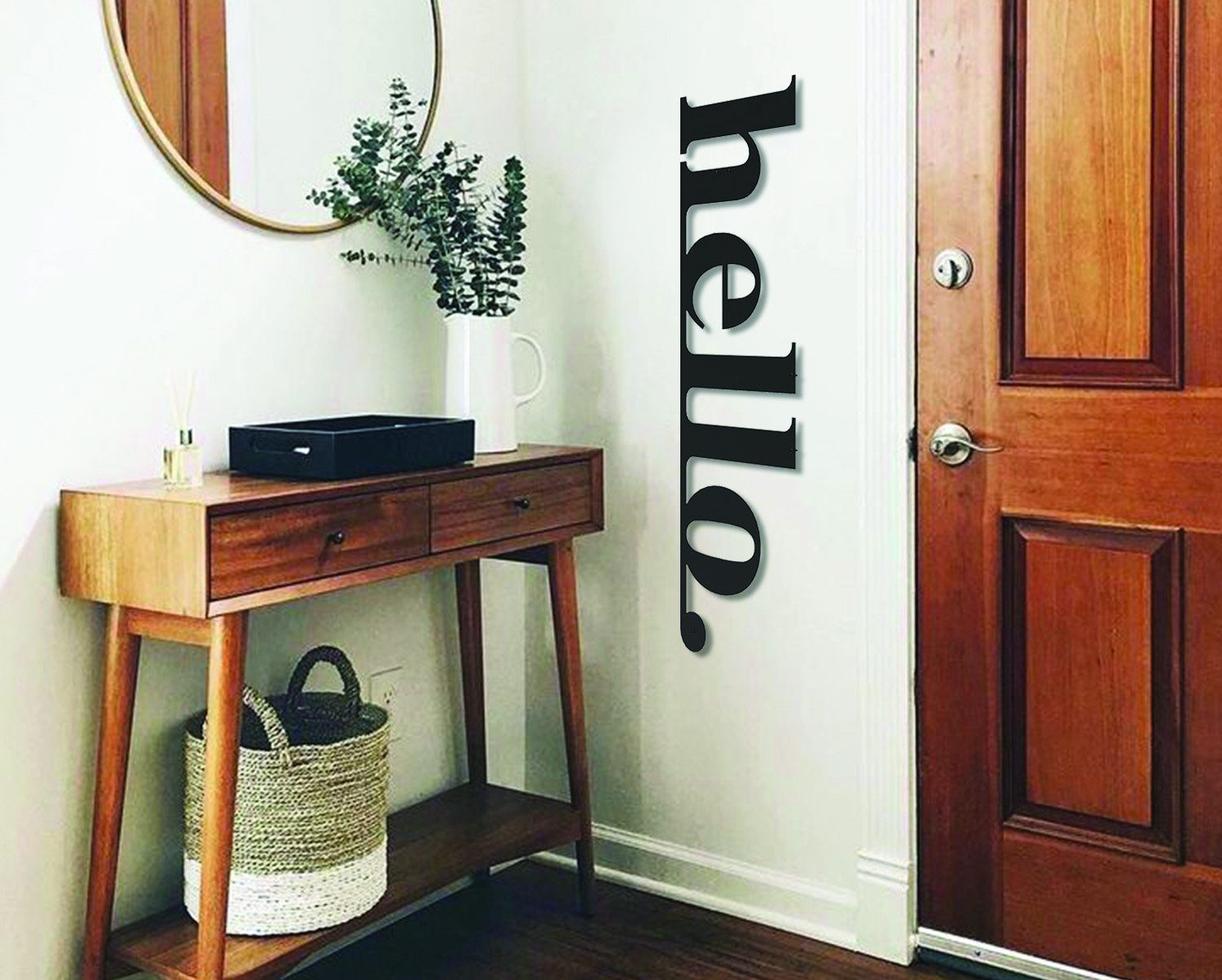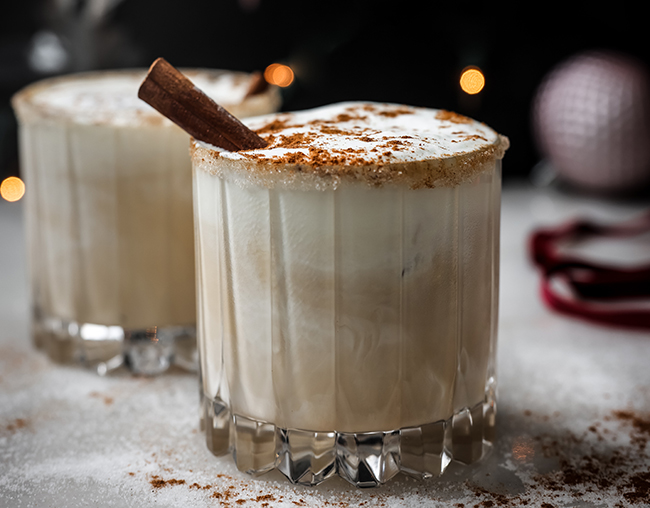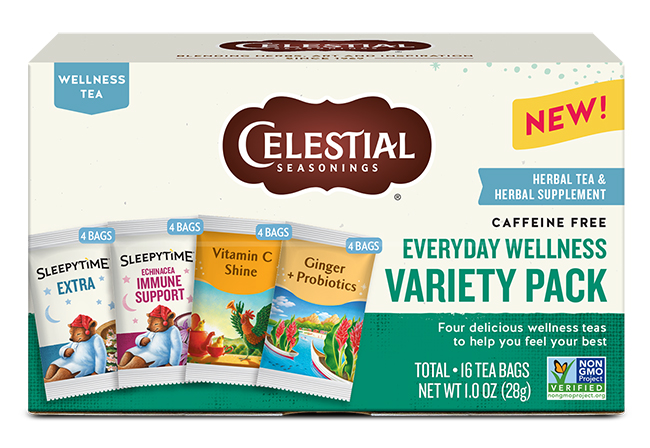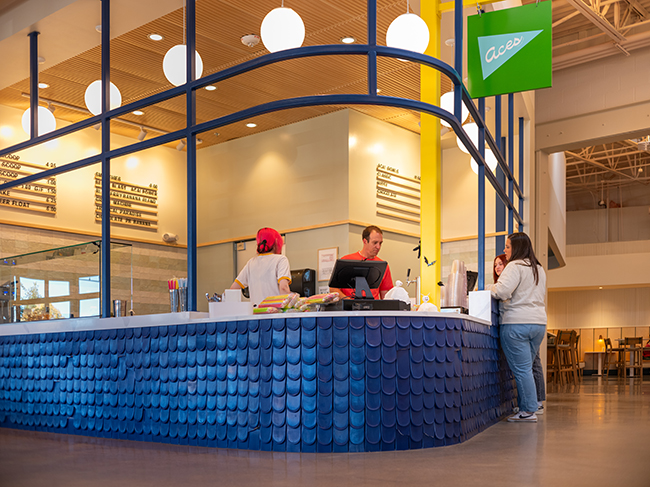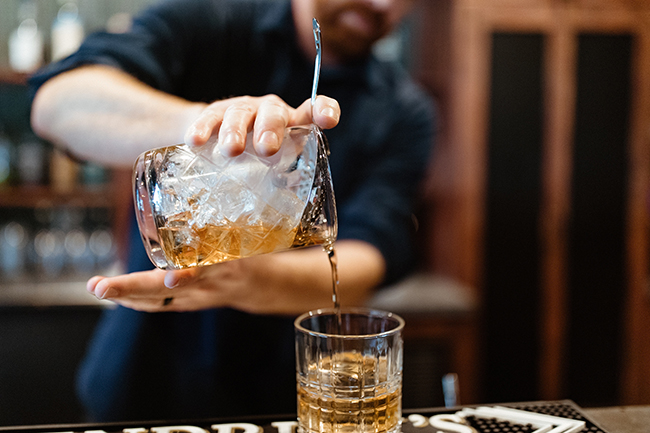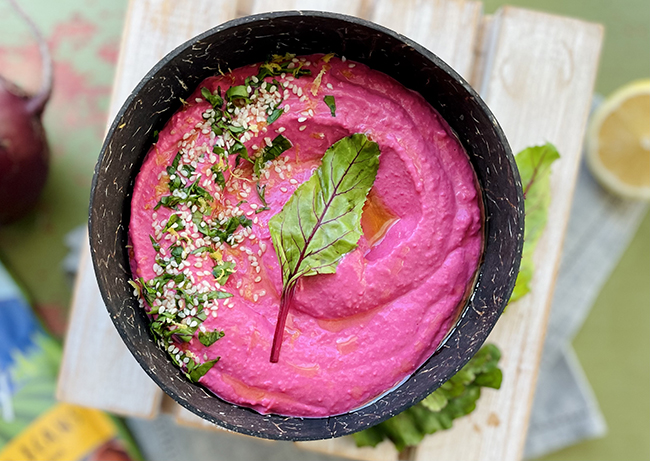Edible Flower Power
09 Jun 2021
Edible flowers are not only pretty, they’re pretty enough to eat
By Lisa Truesdale
Picking summer flowers is always a delight. Although most of these beautiful blossoms are destined for vases, don’t overlook another, tastier possibility: “Eat them!” says Boulder herbalist and author Brigitte Mars. Edible flowers make any meal feel like a special occasion.
Like most plants, flowers contain phytochemicals that may protect human cells from damage when ingested, while others have proven therapeutic uses or are trusted folk remedies. “Each flower has its own story,” Mars says. Calendula, for instance, is high in lutein, which is good for the eyes. Hibiscus is believed to help lower high blood pressure. Elderflower can strengthen the immune system. And on the folk-remedy side, Mars says roses help open your heart chakra and pansies can soothe a broken heart.

But do your research before simply popping a flower into your mouth. “Lily of the valley is actually poisonous,” says Mars, who recommends using a plant-identifier app such as iPlant (the basic version is free), which explains culinary and medicinal uses for hundreds of plants.
After determining that a certain flower is edible, you may want to do a little taste test, since some very pretty or beautifully scented flowers are not quite as pleasing to the palate as others. Lavender, for instance, is included in culinary spice blends like herbs de Provence, but it smells a lot better than it tastes.
The most reliable source for edible flowers is your own backyard, Mars says. (See list to the right for planting suggestions.) When you grow your own flowers, you can be sure they’re free of pesticides and other dangerous chemicals you shouldn’t ingest.
If you recently bought a home or rent, Mars suggests checking with the previous owners or landlord to see if they’ve used any chemicals in the garden. After two years of no pesticides, the soil should be safe again for growing flowers that you plan to eat, she says, but don’t eat anything grown within 50 feet of a busy street.
If you don’t have a green thumb or yard space, you can find organic edible flowers at a farmers market and sometimes at supermarkets. Never consume flowers from a florist shop, however, as they’re routinely treated.
From Plant to Plate
Large blossoms like squash and zucchini are suitable for battering and lightly frying. You can also stuff them with soft cheeses, like ricotta or chèvre. At The Greenbriar Inn in Boulder, co-owner Emma Goddard says their tomato zucchini bisque is topped with roasted eggplant caponata, a chive flower and a lightly fried tempura zucchini blossom. The tomatoes, zucchini and eggplant are all grown in the restaurant’s on-site organic garden.

Overall, cooking with edible flowers is pretty simple because you normally don’t want to cook them at all. “They’re high in water content,” Mars explains, “and cooking kills most of the nutrients.” One of the simplest and best ways to serve edible flowers is to use them as a garnish for sweet or savory foods. Decorating a dish with flowers makes people feel special, says Mars—“like they’re royalty or a fairy queen”—and they’re often pleasantly surprised when they learn they can eat the decorations.
She suggests gently breaking up larger flowers when garnishing a dish or tossing them into salads. “People probably won’t eat a huge flower, especially if they’re not used to eating them, but you can always create a pretty design with the petals.”
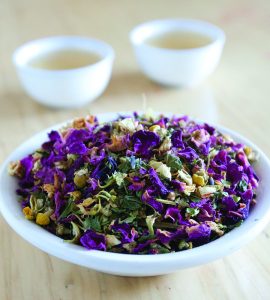
At Boulder’s Dushanbe Teahouse, organic flowers and herbs from Three Leaf Farm in Lafayette are dried and blended to make dozens of herbal teas, says Sara Stewart Martinelli, co-owner of Three Leaf Concepts, which operates the teahouse and the farm, along with other area restaurants. Fresh flowers also decorate the three-tiered trays filled with sweet and savory treats for afternoon tea. Martinelli uses organic, farm-fresh flowers to decorate wedding cakes made at The Huckleberry in Louisville, “which is especially lovely if the wedding is also being held at the farm,” she says.
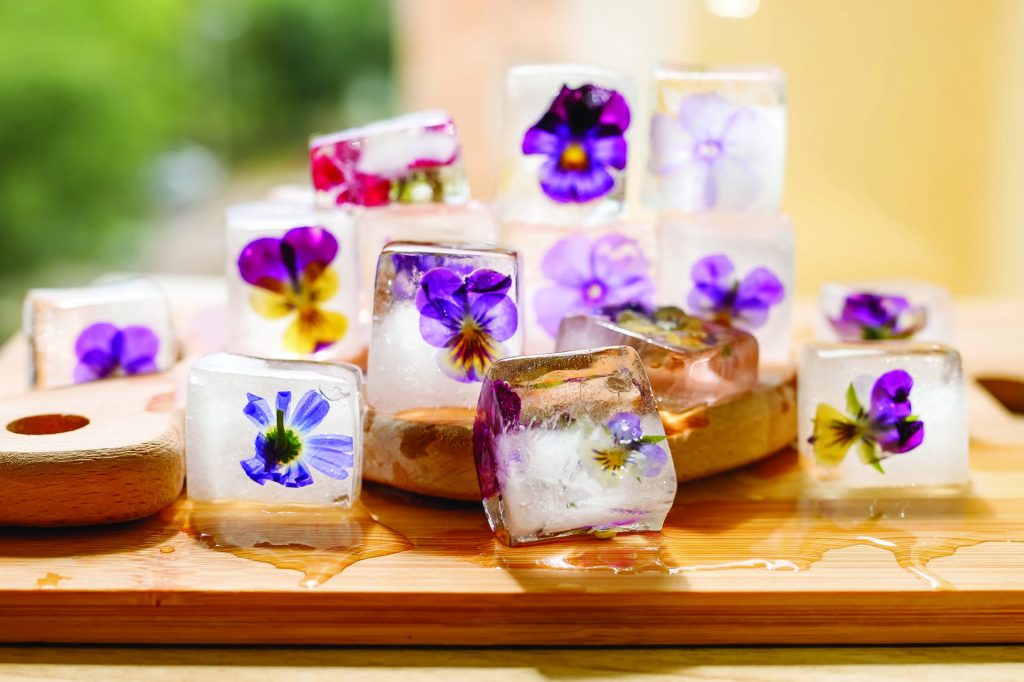
Nasturtium Butter
Recipe by The Greenbriar Inn
The Greenbriar Inn uses nasturtiums and herbs from the restaurant’s on-site garden to make a tasty butter to top fish entrées like halibut and sea bass. The flowers are slightly spicy, and the heat and floral notes nicely complement fish, chicken and pork. They shared their recipe, but it yields a restaurant-sized portion so you may want to halve or even quarter the ingredient amounts. However, we recommend making the full amount and giving the extra butter to your neighbors. After all, flowers and food are best when shared!
3 pounds unsalted butter, softened
1 lemon, juiced
2 limes, juiced
2 cups nasturtium flowers, roughly chopped
¼ cup chives, finely chopped
½ cup roasted pistachios, finely chopped
2 tablespoons shallots, finely chopped
1 tablespoon pink Himalayan sea salt
1 teaspoon ground white pepper
1 teaspoon coarse ground black pepper
3 red cherry peppers, finely diced
DIRECTIONS
Combine all ingredients in a food processor and blend until just incorporated. Don’t overblend; you want flakes of the different colored ingredients to show. Roll the butter into 1- to 2-inch round logs (approximately 10 inches in length) in wax paper. Chill in refrigerator until set or freeze in a freezer bag for future use.

Tips for Baking with Edible Flowers
Edible flowers atop your favorite shortbread cookies are tasty showstoppers at any party.
- Both the petals and full flowers are beautiful choices.
- If using the full flower, remove the stem, keeping just enough to hold the flower together.
- Flatten thicker flowers between two sheets of parchment paper with a book on top for 30 minutes.
- Brush the cookie tops with beaten egg white.
- Lightly press a flower onto each cookie, cover with parchment paper and use a rolling pin to gently press the flowers onto the dough.
- Before baking, sprinkle lightly with sugar.
- Keep a careful eye on the cookies, so you don’t overbake them.



